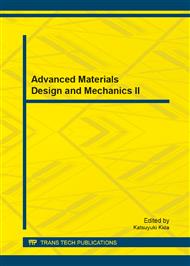p.97
p.101
p.104
p.111
p.115
p.119
p.123
p.128
p.132
Fluorescent DNA Probes Based on Quantum Dots and Core/Shell Quantum Dots
Abstract:
Fluorescent DNA probes based on the fluorescence resonance energy transfer (FRET) were presented in this paper when AuNPs were as the energy acceptors and CdTe quantum dots and CdTe/SiO2 core/shell nanoparticles were as the energy acceptors, respectively. The DNA probes were prepared when energy donors and acceptors were conjugated with two single-stranded complementary oligonucleotides and hybridized with each other and the fluorescent intensity of probes could be decreased. The quenching efficiency of DNA probe was about 67 % when CdTe QDs were as the energy donors, while that of DNA probe was about 75 % when CdTe/SiO2 fluorescent core/shell nanoparticles were as the energy acceptors, which indicated that CdTe/SiO2 core/shell nanoparticles were suitable donors compared with CdTe QDs in DNA probe field.
Info:
Periodical:
Pages:
115-118
Citation:
Online since:
August 2013
Authors:
Keywords:
Price:
Сopyright:
© 2013 Trans Tech Publications Ltd. All Rights Reserved
Share:
Citation:


